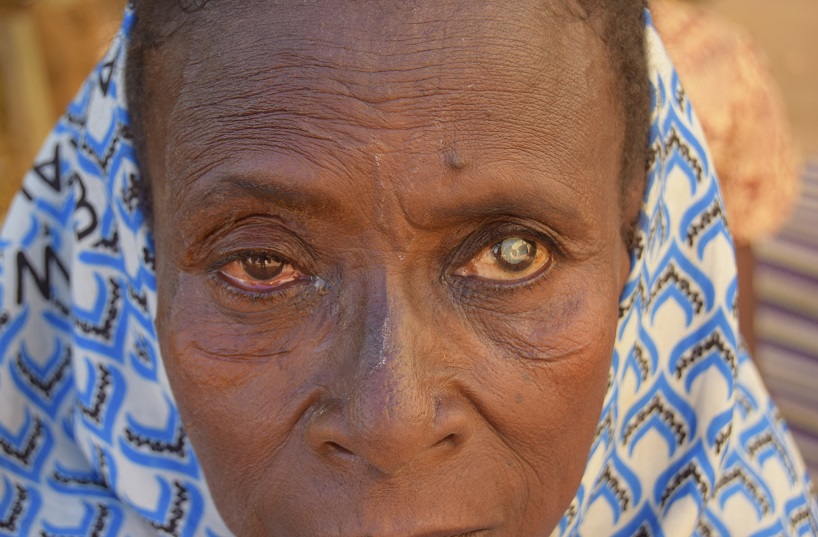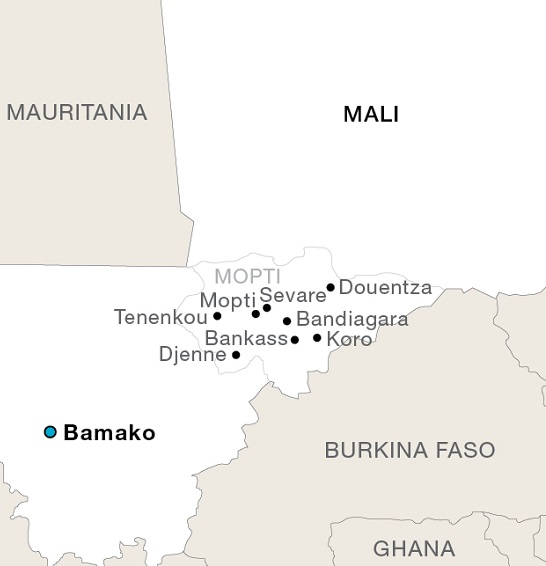
Ο Population: 19.7 million
Ο Life expentancy: 59.3 years
Ο Gross domestic product (GDP): $2,327
Ο Child mortality rate: 62 ‰
Ο Human Development Index (HDI): 0.434 – 184th position
Ο Gender Development Index (GDI): 0.821
Ο Multidimensional Poverty Index (MPI): 0.376
Ο Carbon dioxide emissions (tonnes per capita): 0.2
Source: UNDP's Human Development Report 2020.
Main ocular health data
It is estimated that there are 2.2 million people in Mali with vision loss
Ο Blindness: 167,465
Ο Moderate and severe visual impairment: 383,055
Ο Mild visual impairment: 778,633
Ο Near vision: 869,222
Ο Proportion of women: 52%
Source: The IAPB Vision Atlas 2020.
Improving the people’s health in Mopti while contributing to the fight against poverty and social exclusion
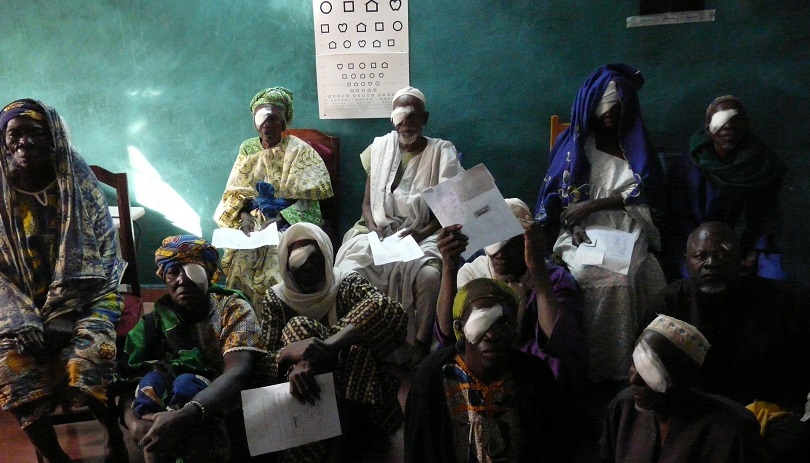
Eyes of the world aims to improve the eye health of the people in Mopti. In spite of the many efforts and achievements made by the Foundation over the past 10 years, the Mopti region has over 2 million inhabitants and only three ophthalmologists. It is estimated that with the 78% of the population living in poverty, blindness has an estimated prevalence of 1.2%, between six and seven times higher than in the neighboring countries, mainly due to preventable causes or curable eye conditions.
Following the Foundation’s Strategic Plan for the Prevention and Fight against Blindness in Mali, Eyes of the world cooperates with the National Plan for Fighting against Blindness and Mopti’s Regional Directorate of Health, which manages Mopti’s Regional Plan. The goal of the cooperation is to improve preventive measures and guarantee permanent ophthalmic and optical care in the region. This will then increase access to primary eye care at Communal Health Centres and specialised eye care at the Sominé Dolo Hospital and the Reference Health Centre in Bankass. In order to reach these objectives, Eyes of the world has donated all the necessary equipment and supplies for the facilities, and trained health personnel at all levels. By enabling local professionals and providing them the necessary equipment, we are able to guarantee quality, accessible eye care for all, even those who are extremely poor.
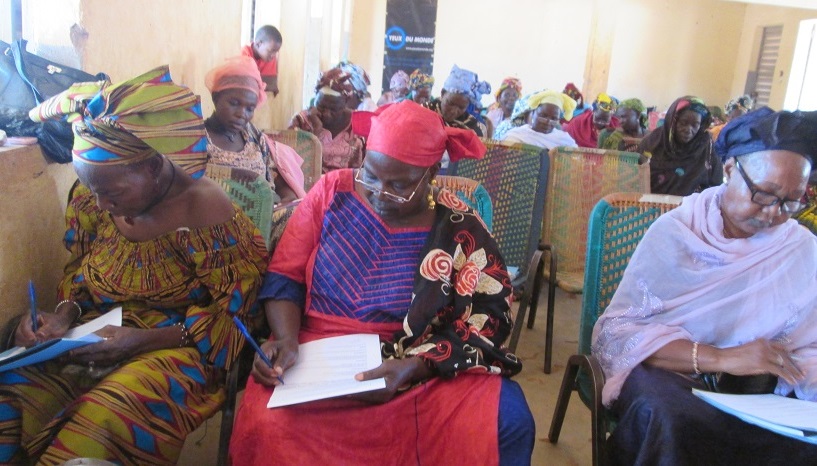
Furthermore, in an effort to reach as many people as possible, Eyes of the world employs the help of Malian health professionals and organises periodical medical expeditions that visit remote areas of the region where there is no access to eye care. These medical expeditions have two main objectives: reducing the prevalence of eye diseases and raising awareness of the people’s right to be treated by eye care specialists. Educating the local people about their right to sight is the first step towards making a collective effort to improve eye health, and one of the main pillars of the Eyes of Mali project.
Moreover, Eyes of the world organises educational activities on eye health and early detection of eye disease in cooperation with women associations, most often with the CAFO. Such activities target mainly mothers. The Foundation also promotes changes to increase gender equity in women's access to eye health in the region through these actions and various trainings aimed at combating discriminatory stereotypes.
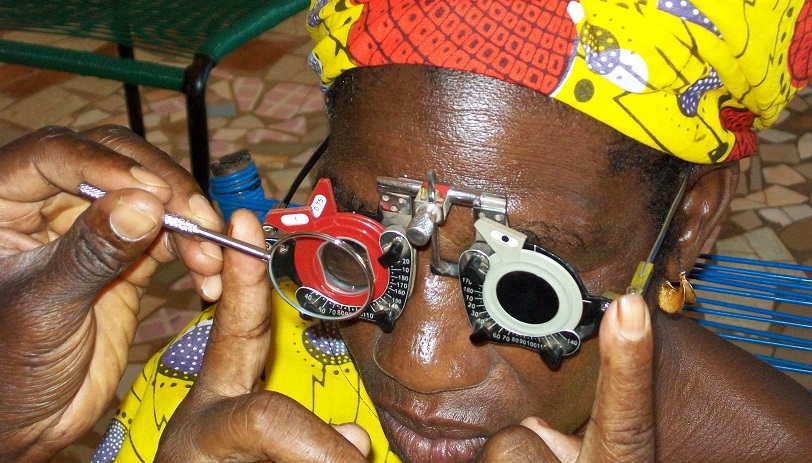
In addition, ever since it was first implemented in 2008, the Eyes of Mali program has contemplated the development of ophthalmic subspecialties at the African Institute of Tropical Ophthalmology, a reference centre for neighbouring countries for ophthalmic care. The Foundation already provided the Institute with most of the necessary equipment to open a retina unit, and a pediatric unit with two ophthalmologists. Furthermore, Eyes of the world participates in the training of professionals of both units so that they will possess all the necessary knowledge to properly treat patients requiring specialised treatment. As quality eye care can only be guaranteed if professionals are well trained, Eyes of the world has given several training grants to the heads of the unit as well as the members of their team.
One of the most outstanding tasks of Eyes of the world in Mali is the prevention of ocular pathologies in children, as 42.44% of children suffer from some type of ophthalmic pathology. Visual acuity evaluation campaigns, detection of refractive errors in schools and donation of refractive glasses are carried out periodically. This task is essential in order to identify eye conditions in time and avoid the risk of exclusion and school failure, but it also raises awareness among the child population about the importance of taking care of their eyes.
Currently, the Eyes of Mali project also faces the challenge of responding to the conflictive political-war situation that exists in the area and that is causing the exodus of people living in the most conflictive regions. Internally displaced people who arrived in the Mopti region, specifically from the Djenné district, live in camps with no access to medical services, where Eyes of the world organizes free consultations.
The project has also incorporated issues of sustainability and care of the environment, especially about food security and climate change, with the ultimate goal of fighting poverty. The aim is to guarantee environmental sustainability in a transversal way, improve the capacity of health services to manage the biomedical waste generated, make water accessible to everyone to improve the hygiene of the population and change the attitudes and knowledge of the community in order to have better environmental health practices.
To see again. How does one react when, after suffering blindness for years, he or she regains sight? This video reveals the memorable moment in which the doctors of Eyes of the world opened Telly Amadou's eyes. In his own words, being able to see again has been “the greatest happiness I have ever felt in my life.”
Fatoumata Barry is 55 years old, a housewife and milk seller in Soïma, Mali. Bilateral cataracts left her disabled and isolated for more than two years, but in November 2017 her luck changed. She was one of 40 people who said goodbye to blindness during a medical-surgical commission in the area. Forty people who recovered vision, autonomy, and hope. Forty personal stories that show that to see again means to live again.
Activity report 2022 (PDF)
Activity report 2021 (PDF)
Activity report 2020 (PDF)
Contact in the area
Sevaré National Road, 15
Mopti region
Mali
